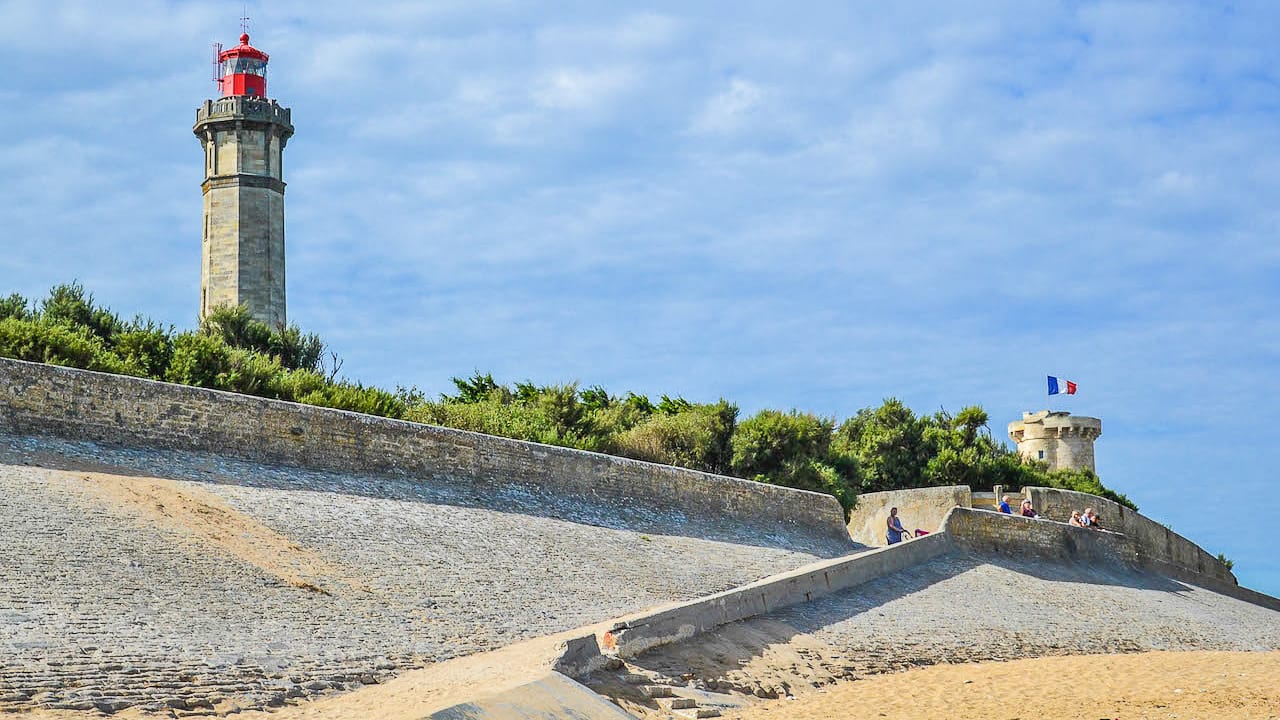If you fancy the sea, love wide beaches and are fed up with the glamorous life on the Mediterranean or the Adriatic, you should take a look at the French Atlantic coast. The islands of Ré and Oléron lie off La Rochelle, the city that was like a second home for many German submariners during the Second World War. Here you have pure island idyll. Neither hotel castles nor beach chairs spoil the picture. And you won’t find any sun loungers with parasols lined up in rows. On both islands, people live in harmony with the ebb and flow of the tide and from what the fertile soil and the sea have to offer. Sunny sandy beaches, shady pine forests, salt marshes and dunes as well as small, cozy villages round off the homely impression of the islands. And – typical of the Atlantic – the climate is mild, but sometimes a little harsh.
Inhaltsverzeichnis
- Two pearls in the Atlantic
- Campers desire
- Ile de Ré la Blanche: The white one on the Atlantic coast
- What the heart desires
- Beaches on the French island of Ile de Ré
- Agriculture and maritime traditions meet in the kitchen
- Campsites on the Ile de Ré
- Ile d’Oléron: Welcome to the island of light
- Ile d’Oléron campsites on the east coast
- Ile d’Oléron campsites on the west coast
- What else is there to do on or from the French islands?
- Conclusion on the French islands of Ile de Ré and Île d’Oléron
Two pearls in the Atlantic
Embark on a discovery tour and experience the islands that belong to the Charente-Maritime department. Between Bordeaux in the south and Nantes in the north, where Brittany begins, an earthquake is said to have engulfed the mythical Roman city of Antioche. According to legend, the two islands are the last two remnants of this catastrophe.
The Ile de Ré measures around 30 kilometers in length and between 70 meters at its narrowest point and five kilometers at its widest. It is nestled in the Antioche and Breton straits. At 85 square kilometers, it is the fourth largest island in France. The Ile d’Oléron is also only just over 30 kilometers long. However, its width of 12 kilometers makes it the second largest European island of the French after Corsica with an area of 174 square kilometers. Between the two islands and the mainland lies the Pertuis d’Antioche, a stretch of sea that is not only famous among sailors, but also among gourmets from all over the world: the best oysters are grown here and marketed worldwide under the name of origin Huitres Marennes-Oléron. Both islands can be reached via bridges: The second longest bridge in France, the“Pont de l’île de Ré“, leads to Ré. An eco-toll of up to 18 euros is payable for the almost three-kilometre-long journey, which crosses the sea at a height of 42 meters (those who are put off by the price should bear in mind that this finances a targeted educational policy to protect biodiversity on the island).
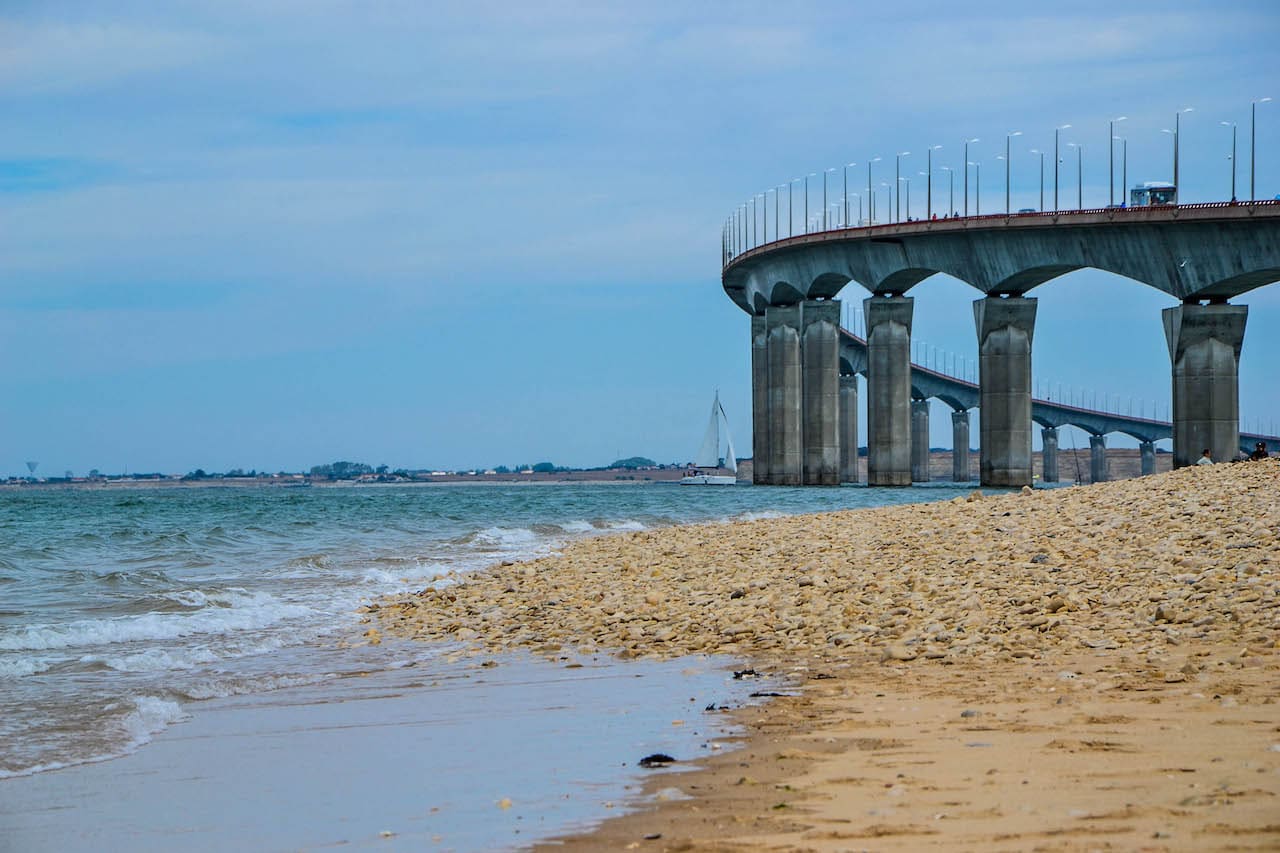
Both islands benefit from their geographical location in the Atlantic Ocean and the Gulf Stream. The climate is temperate all year round. A gentle sea breeze cools the hot summer days and the winter months are considered mild. With over 2,600 hours of sunshine a year, the islands even compete with Corsica, far to the south. It is not for nothing that the mimosas bloom here as early as February.
What the two also have in common is that they have plenty of surprises in store for visitors. Mediterranean-style villages, huge lighthouses, lots of art and culture in the midst of untouched and vibrant nature. For hikers and cyclists, the two islands have beautifully laid out and signposted paths. Fans of culinary delights will get their money’s worth with the down-to-earth cuisine, which uses a lot of fish and seafood. Whether you are traveling alone, with your family or with your dog (who can romp on empty beaches here) – there are plenty of opportunities for sport, relaxation, adventure and discovery to suit all tastes.
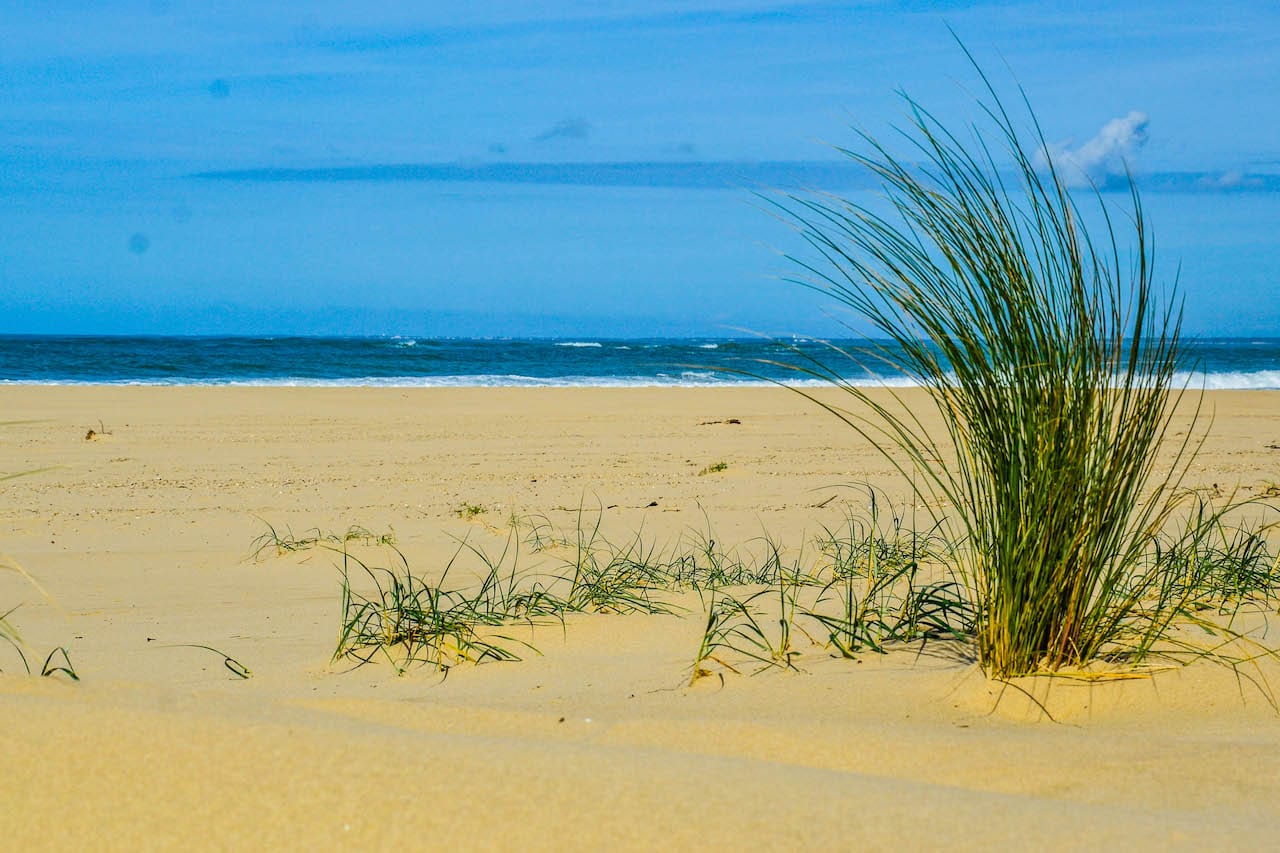
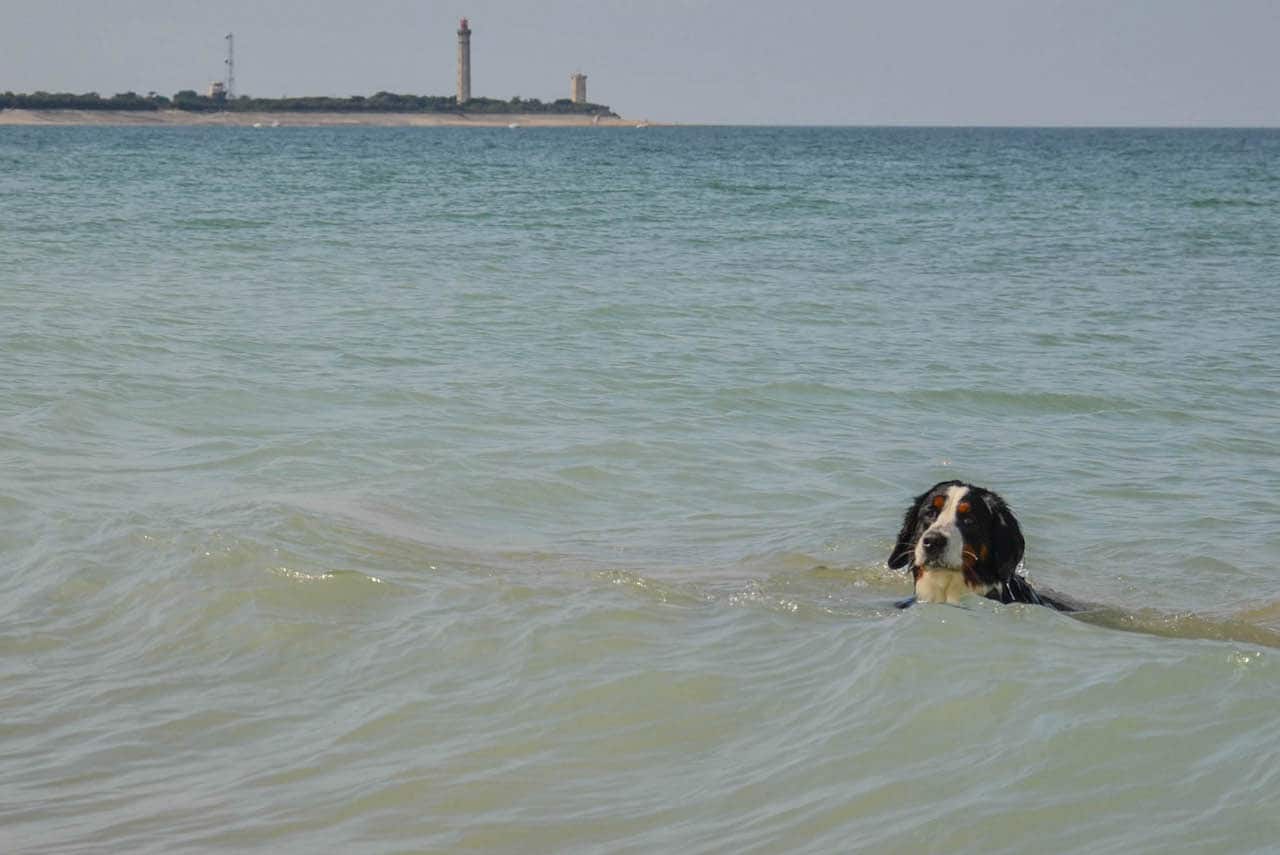
[apn typ=”template” template=”tpl-2″ asin=”B074MB7CY5″ tag=”cstra-0019-21″ tpl-infobox=”true” tpl-buttontpl=”0″ false=””]
Campers desire
As could be otherwise in France, the islands have also created an excellent infrastructure for campers. Campers and caravanners feel at home on the spacious campsites along the coast or inland. Tent campers will find fluffy pitches as well as travelers without a roof over their heads, as almost all camping companies have simple to luxurious rental accommodation. The number of motorhome pitches(Aire de Camping Car) has stagnated in recent years. However, there are plenty of them available on both islands.
Ile de Ré la Blanche: The white one on the Atlantic coast
The Ile de Ré consists of panoramic sea views, heaths, dunes, pine forests, salt marshes and long sandy beaches. But also 10 authentic, charming villages. Once you have crossed the bridge, you are greeted by Rivedoux-Plage. The cozy village lies between two long headlands with a white sandy beach. On the way along the harbor, you will reach the oyster farmers’ huts, where you can slurp up the fresh mussels accompanied by a dry white wine or take them home by the dozen.
Small white houses with green-painted shutters stand in the flower-filled alleyways: Ars-en-Ré is located in the north of the island in the middle of the salt marshes. Its church with its 40-metre-high bell tower still serves as a landmark for shipping today. The salt marshes of Fier d’Ars are cultivated by 60 salt workers from the village. They harvest the white gold – fleur de sel, which is coveted by gourmets from all over the world.
In the center of the island, La Couarde-sur-Mer pays its respects. The town boasts a small harbor where fishing boats and yachts bob up and down. The harbor has inspired numerous painters and photographers to create works of art. A five-kilometre-long sandy beach belongs to the village and is the starting point for discovery tours by bike or on foot. The northernmost point of the island, Saint-Clément-des-Baleines, not only has the longest and widest beach on the island, but with its lighthouse, the “Phare des Baleine”, and its 257 steps, it also offers an exceptional view over the entire island and the surrounding straits.
Loix is worth exploring by bike: on the one hand, you cycle along the harbor cycle path directly by the sea and on the other, you discover new perspectives on the salt trail, which takes you through salt marshes and olive groves. Finally, Sainte-Marie-de-Ré is a traditional island village. Situated between vineyards and the Atlantic Ocean, the village is a magnet for locals and visitors alike with its daily market. An eight-kilometre nature trail awaits you in the district of La Noué, taking you on a journey of discovery through the various natural habitats of Ré.
The historic La Flotte is one of the most beautiful villages in France. Remarkable architecture and narrow, flower-filled alleyways, the medieval-inspired market and the charm of its harbor all contribute to this title. Numerous restaurants, bistros and guest terraces along the harbor pier invite you to stop for a bite to eat.
Tip
On the way to La Flotte, you will pass the ruins of L’Abbaye des Châteliers. Take the opportunity for a photo shoot, as the remains of the monastery present themselves in a different light every hour.
Six kilometers of sandy beaches and the extensive pine forest directly behind the dunes – that’s Le Bois-Plage. The village has more to offer than just winding alleyways, as it has a long history dating back to the 15th century. In the windows of the Notre-Dame de Tous les Saints church, you will discover engraved marine motifs and old winegrowers’ houses adorn the village next to a cooperative wine cellar.
The capital of the French island of Ile de Ré is Saint-Martin-de-Ré. It was awarded UNESCO World Heritage status – probably for good reason. The small town is laid out around the harbor. Here you can experience maritime charm in its purest form. The city is also surrounded by an enormous city wall, a 14-kilometre-long fortification system. And you can still spot them here: the famous donkeys with their patterned leg dresses. What makes you laugh today had a practical use in salt production, as the gray animals wore the pants to protect themselves from insects. In the Middle Ages, Saint Martin was a busy trading center from which wine and salt were exported. The citadel, which was built by Marshal Vauban, the famous architect of King Louis XIV, is a masterpiece of 17th century military architecture. Take a tour of the city walls or visit the church tower, the highest point in the city, and enjoy a uniquely beautiful view of the city and the harbor.

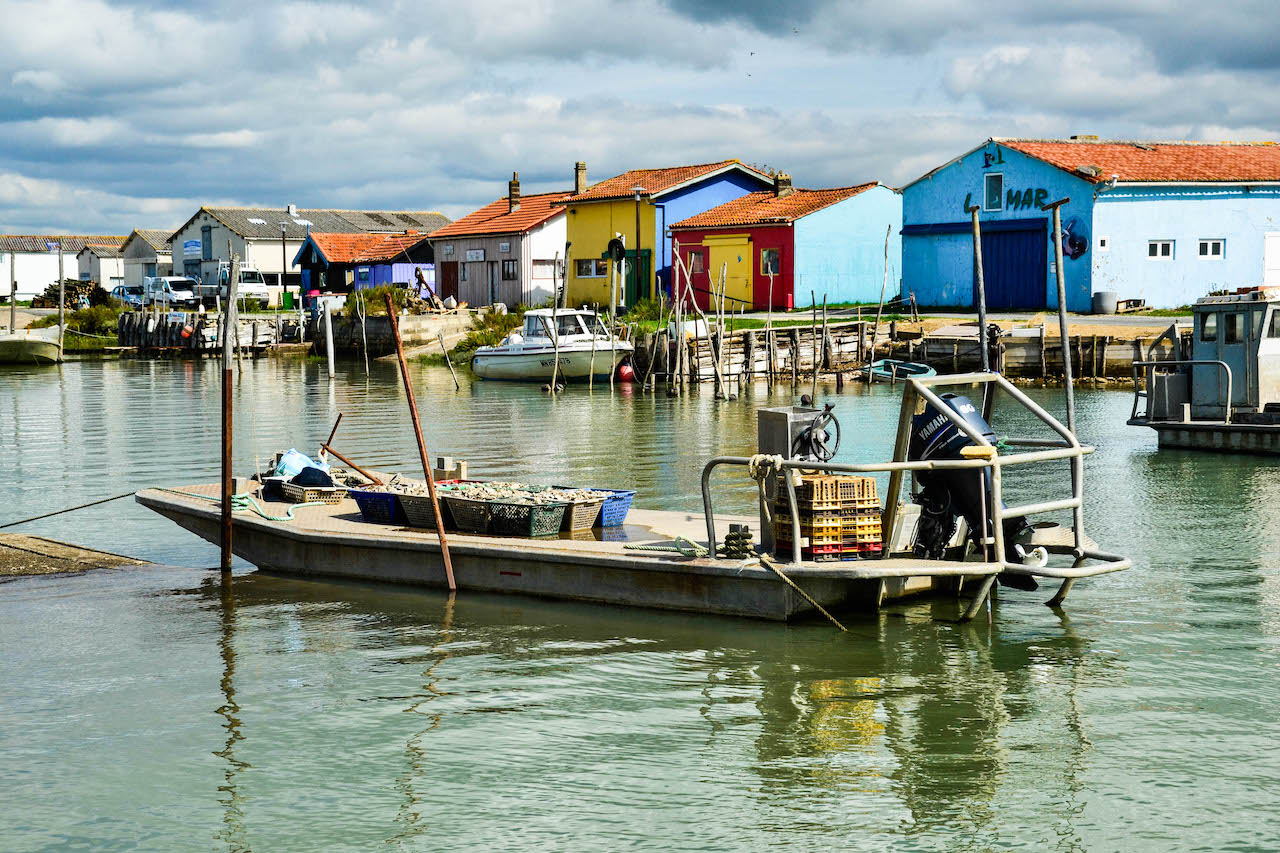


What the heart desires
The Ile de Ré meets every requirement. Here you can spend your vacation days being active and sporty or lying on the beach to relax and unwind. You can also go on discovery tours to explore the island’s many treasures. And if you fancy fish specialties and seafood as well as a glass of white wine, these delights are served fresh here.
Tip
A trip on a scooter… With an all-terrain scooter that promises electric assistance, a ride over the dunes to the beach or a trip to one of the sights will be a real adventure to remember.
There are over 110 kilometers of cycle paths on the Ile de Ré. And of course, exploring the island by bike is the best way to get to know the country and its people. But the landscape is also perfect for hikers. Vast pine and pine forests, high sand dunes and inland salt marshes, heathland and wine-growing areas are home to a wide variety of flora and fauna. The villages and small towns also offer ideal starting points for walks and hikes, where you can discover the cultural treasures of the region.
Beaches on the French island of Ile de Ré
- Plage de Gros Joncs: The beach in Le Bois-Plage-en-Ré is popular with water sports enthusiasts of all kinds.
- Plage Couarde-sur-Mer: On the south coast of the island, the long sandy beach attracts families and water sports enthusiasts all year round with its breathtaking scenery.
- Plage de la Conche des Baleines: The extreme north-west of the Île de Ré offers wild nature and beautiful views of the sea.
- Plage de Trousse-Chemise: Located in a bay in the north of the island, this beach is ideal for relaxing hours.
A paradise for sailors, surfers, divers and water lovers
Take a SUP or kayak out on the canals of the salt marshes . Or would you rather learn to surf, windsurf or sail? There are plenty of schools on the Ile de Ré that will introduce you to your preferred sport.
Agriculture and maritime traditions meet in the kitchen
The cultivation of wine and potatoes, the production and harvesting of salt in the salt marshes, oyster farming in the oyster beds and salt marshes have shaped a vibrant landscape. All of this makes up the identity and authenticity of this region. And as unique as the land is, the food also has its own taste and character. The potatoes of the Ré are considered to be the best you can buy in France. Pineau is a cognac that is often enjoyed as an aperitif, while the island’s white wines enhance the flavor of the fish menu and the beer, which is brewed here in the old tradition, is a popular accompaniment. It is not for nothing that the producers of the Ile de Ré have joined forces under the “Saveurs en Ré” charter to guarantee regionality and manual labor in production.
Now for a small selection of campsites on the French island of Ile de Ré, most of which are open from around March/April to September/October:
Campsites on the Ile de Ré
Camping Ile de Ré Les Acacias
- Location: Between the village and the beach
- park-like grounds
- Numerous rental accommodations
- Address: 17940 Rivedoux-Plage
- Location: quiet on the outskirts
- Shady pitches
- Large number of rental accommodations
- Address: 17630 La Flotte en Ré
- Location: in the shade of a pine forest
- Comfortable pitches with supply and disposal
- Various rental accommodations
- Address: 17630 La Flotte en Ré
Camping Municipal Les Remparts
- Location: close to the town in the middle of the fortifications
- Large, parceled-out parking spaces
- Mobile homes
- Address: 17410 Saint-Martin-de-Ré
Camping Campéole les Amis de la Plage
- Location: in the forest directly on the beach
- Shady pitches
- various rental accommodations
- Address: 17580 Le Bois-Plage-en-Ré
- Location: only 200 m from the beach
- Shady pitches with supply and disposal
- Rental accommodation and heated swimming pool
- Address: 17740 Sainte-Marie-de-Ré
- Location: directly by the sea
- Mostly sunny pitches
- Rental accommodation
- Address: 17740 Sainte-Marie-de-Ré
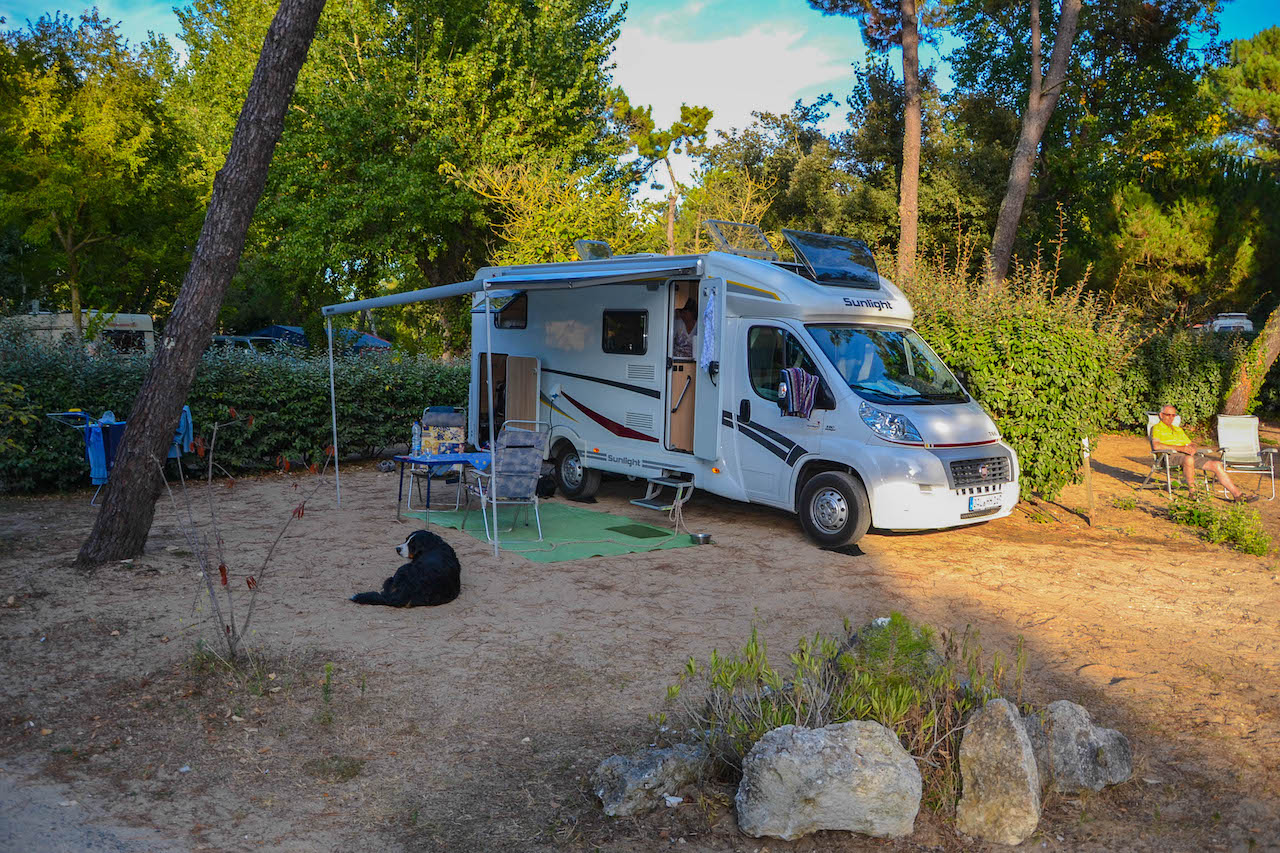
Ile d’Oléron: Welcome to the island of light
Coming from Rochefort, you can reach the “Island of Light” via the Viaduc d’Oléron bridge, which is almost three kilometers long. On the side facing the mainland, you will discover Fort Louvois, a small fortress dating back to 1694, which can be reached on foot at low tide and by a small ferry at high tide. At the south-western end of the island, the first impressions of Saint-Trojan-les-Bains finally emerge. The seaside resort is located in a sparse pine forest that stretches as far as the sand dunes. Wide, fine sandy beaches made the town a popular seaside resort as early as the end of the 19th century. The oyster-farming harbor is particularly worth seeing. With its brightly painted huts, which are now home to artists, artisans and restaurateurs, it is an inviting place to take a stroll.
Le Grand-Village-Plage is right next door. Here, too, you can hike or cycle along marked paths in the pine forest. The wide beaches are considered the most beautiful on the island. At low tide, the beach sailors “Oleron char a Voile” are also out and about here, where you can also hire a board to thunder across the sandy beach with the power of the wind.
Tip
A visit to the salt works harbor is a leisurely stroll to learn about salt production and oyster farming. In addition to guided tours of the salt pans, the Museum of Bonnets and Costumes offers an insight into the festive and work clothing of the islanders in the early years.
You can see the citadel of Château-d’Oléron in the south-east of the island from afar. Cardinal Richelieu had the fortifications built in the 17th century during the Wars of Religion. From there, you have a wonderful view of the famous oyster port and the bay of La Rochelle. Typical local specialties are on sale in the market halls of the small town. You should take a look at these as well as the harbour with its colorful huts.
On the way towards Dolus d’Oléron, you will pass through Ors. There’s not much to see here, but the oyster farmers’ activity in the narrow channel is a real spectacle at low tide when they head out to their oyster beds on the mudflats. To the west of Dolus, two of the most beautiful beaches, Vert-Bois and La Remigeasse, lie at your feet.
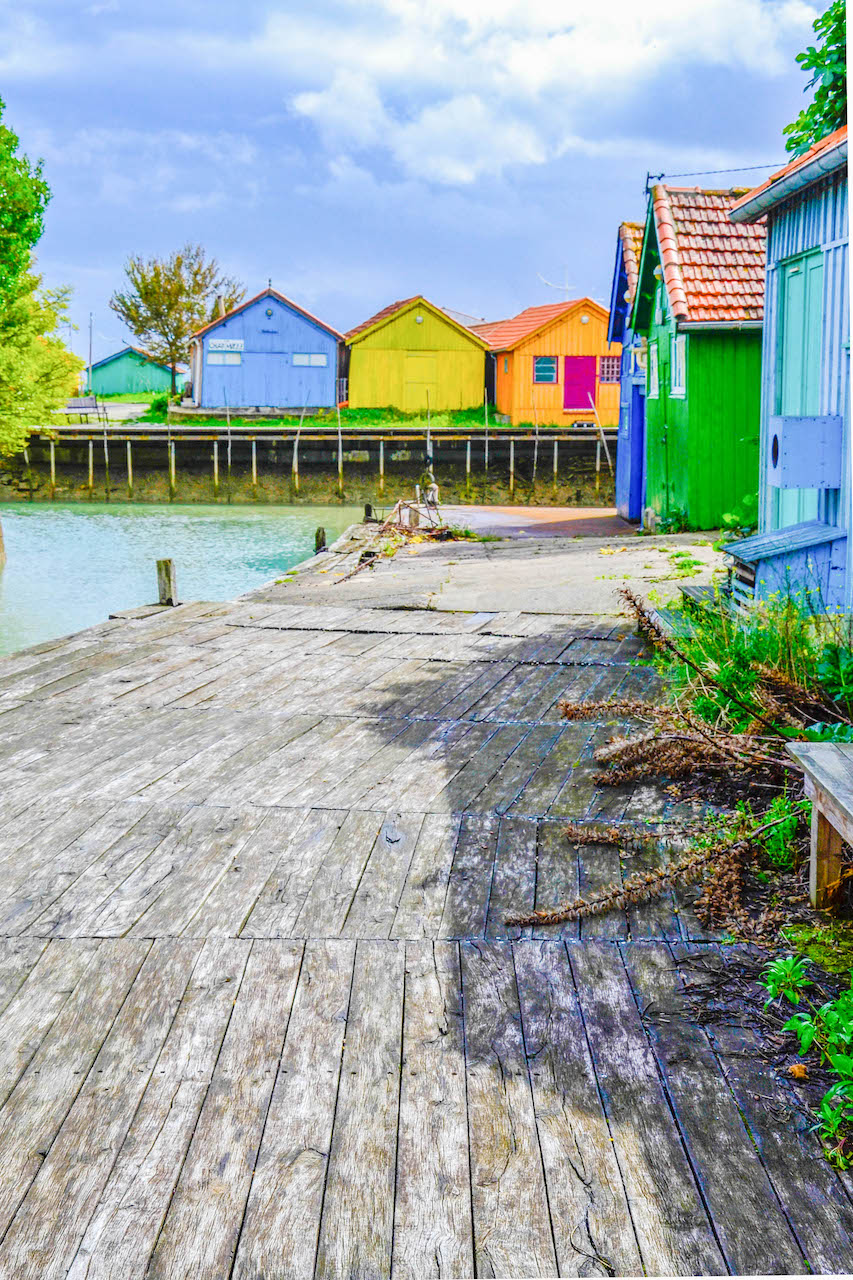
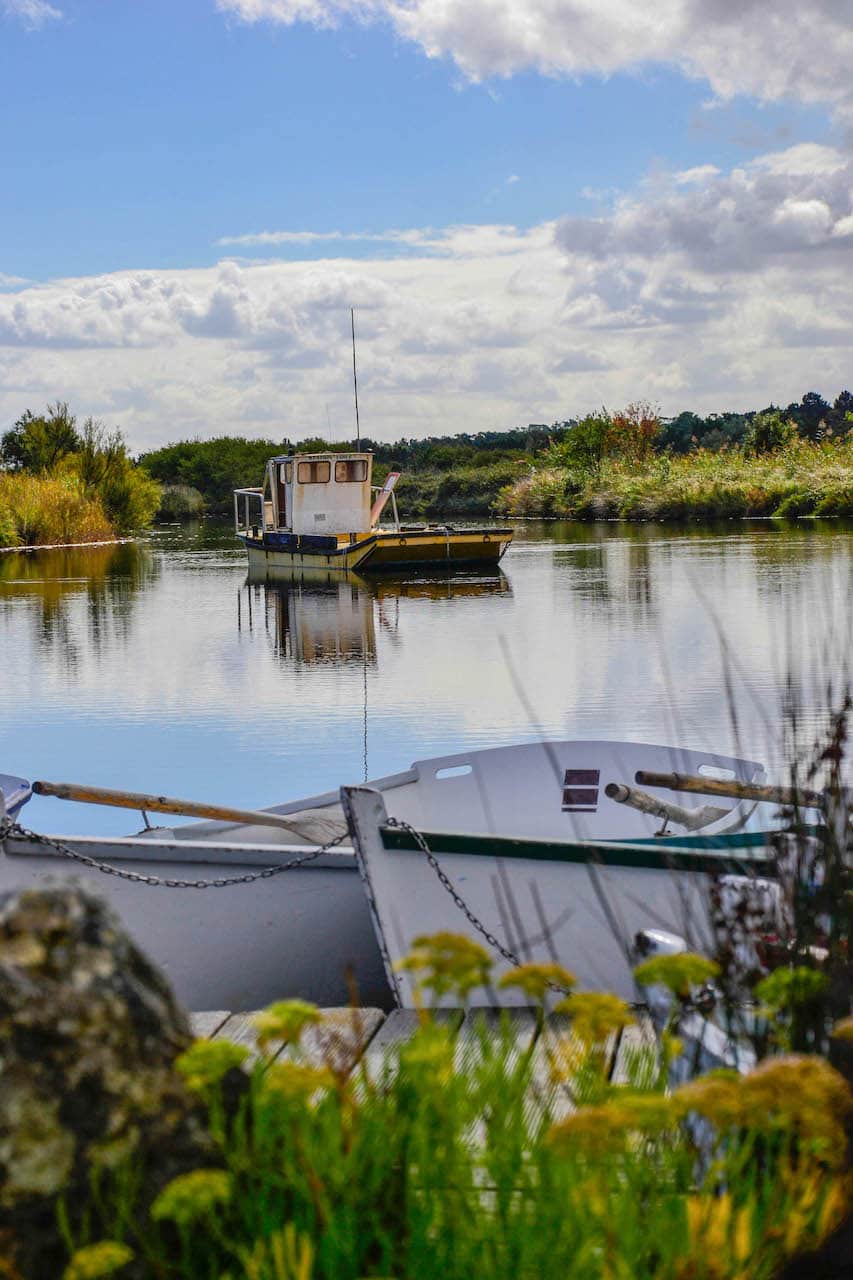
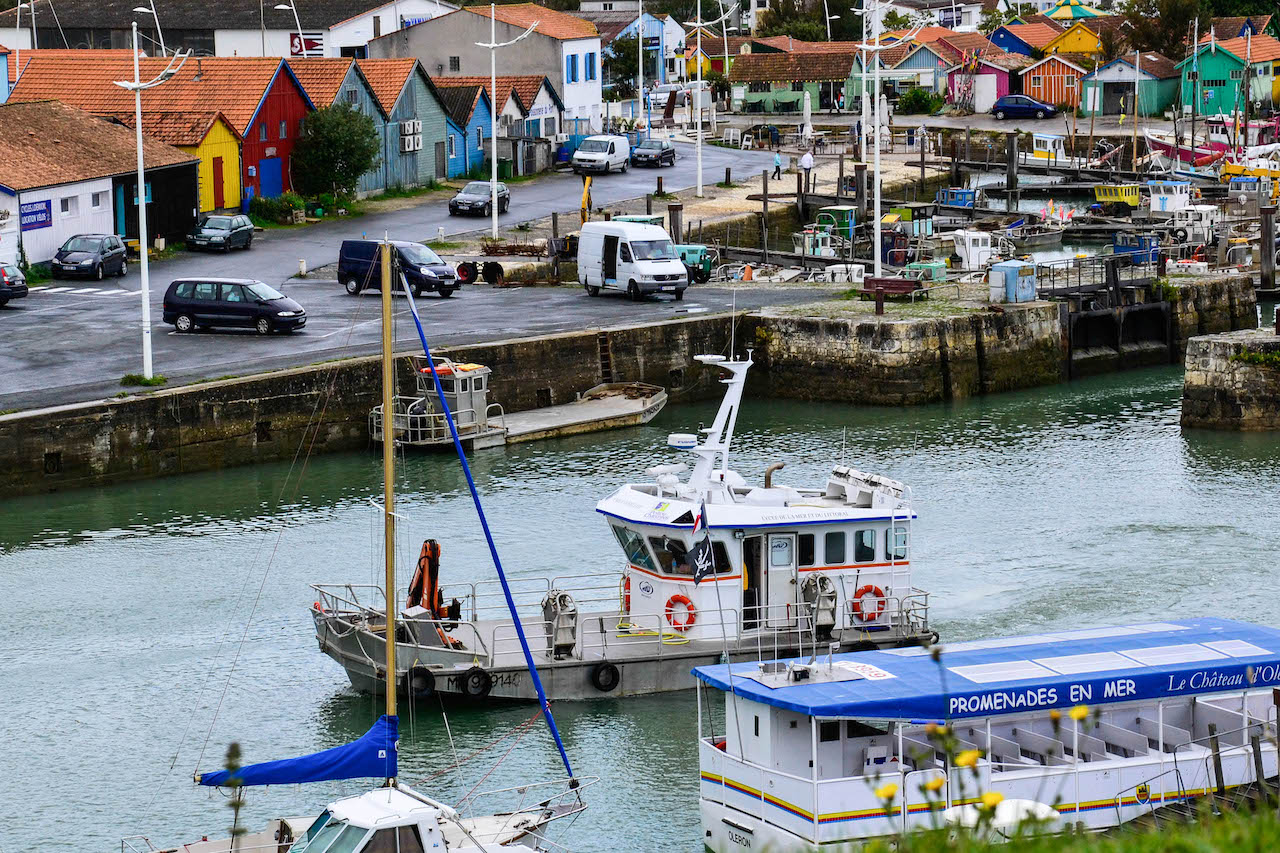
Tip
If you are exploring by camper van, leave your vehicle at the campsite or pitch and take your bike: 2-meter barriers have now been erected in front of all beach parking lots.
Heading north, we finally reach Saint-Pierre-d’Oléron, the island’s main town. The economic and commercial center of the island has a hexagonal church tower. It still serves as a navigation marker for shipping today. As a visitor who has climbed the steps, you have a magnificent view over the island.
To the west of Saint-Pierre, you will reach the most important fishing port in Charente-Maritime, La Cotinière. Landing the catches is always a spectacle when sea bass, sole, lobster and plaice are auctioned off in the large market hall. The town has retained the charm of a pretty little fishing village, even if it is now touristy.
Continuing north, you will come to La Brée les Bains via Saint-Georges d’Oléron, which has a 16-kilometre-long beach. In this pretty seaside resort, it is worth making a detour to the 15th century windmill. Unfortunately, it cannot be visited from the inside as it is privately owned. But it certainly makes for an impressive photo opportunity. As you continue to Saint-Denis-d’Oléron, you will pass salt pans and see the fish locks at low tide, where fish have been caught effortlessly by the tides for centuries.
The northernmost municipality of Saint-Denis d’Oléron is the oldest seaside resort on the island. In addition to low white houses with green or blue shutters, which make a nice photo motif, the town also boasts the largest lighthouse on the Ile d’Oléron. Chassiron offers you the mighty lighthouse with an impressive view of the strait off La Rochelle from a height of 46 meters. On the western side, facing the Atlantic, you can hike over a steep bank of limestone cliffs to the next settlement of Les Huttes.
Tip
You will never forget a sunset on Chassiron.
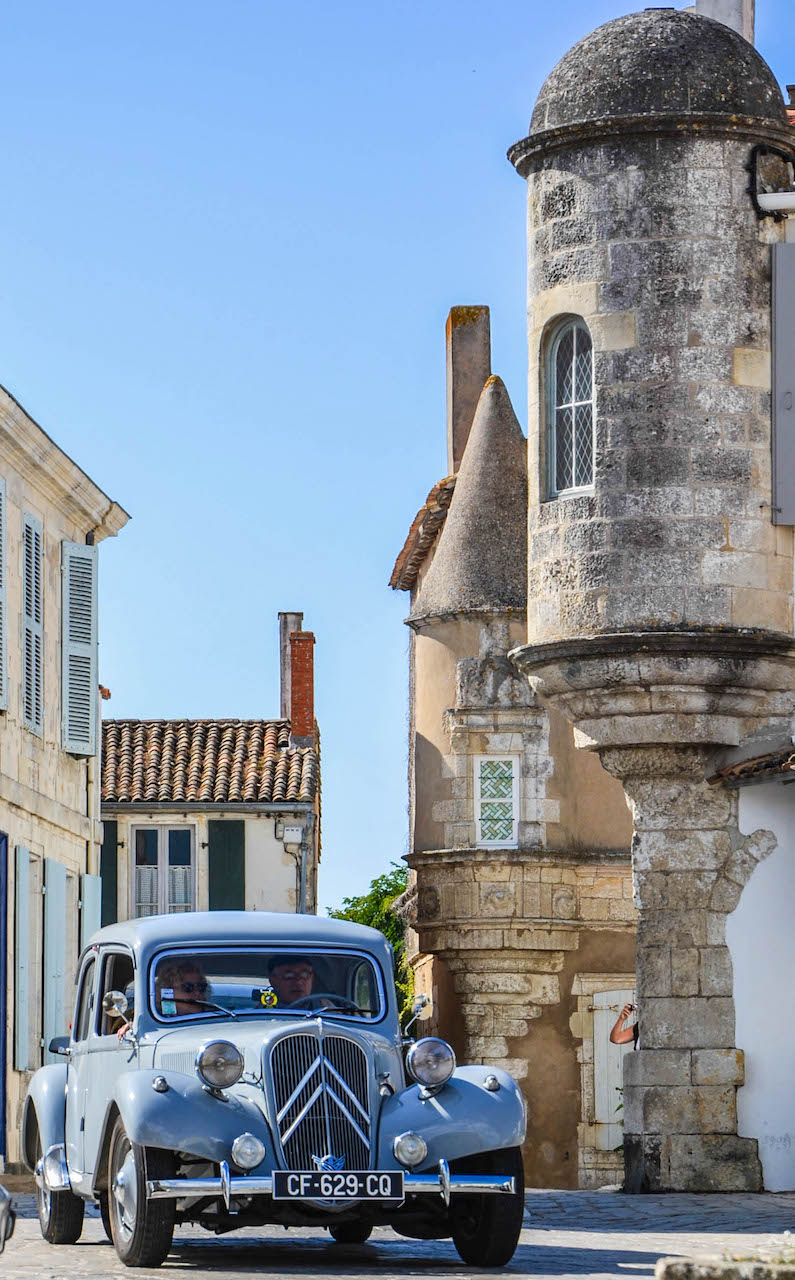
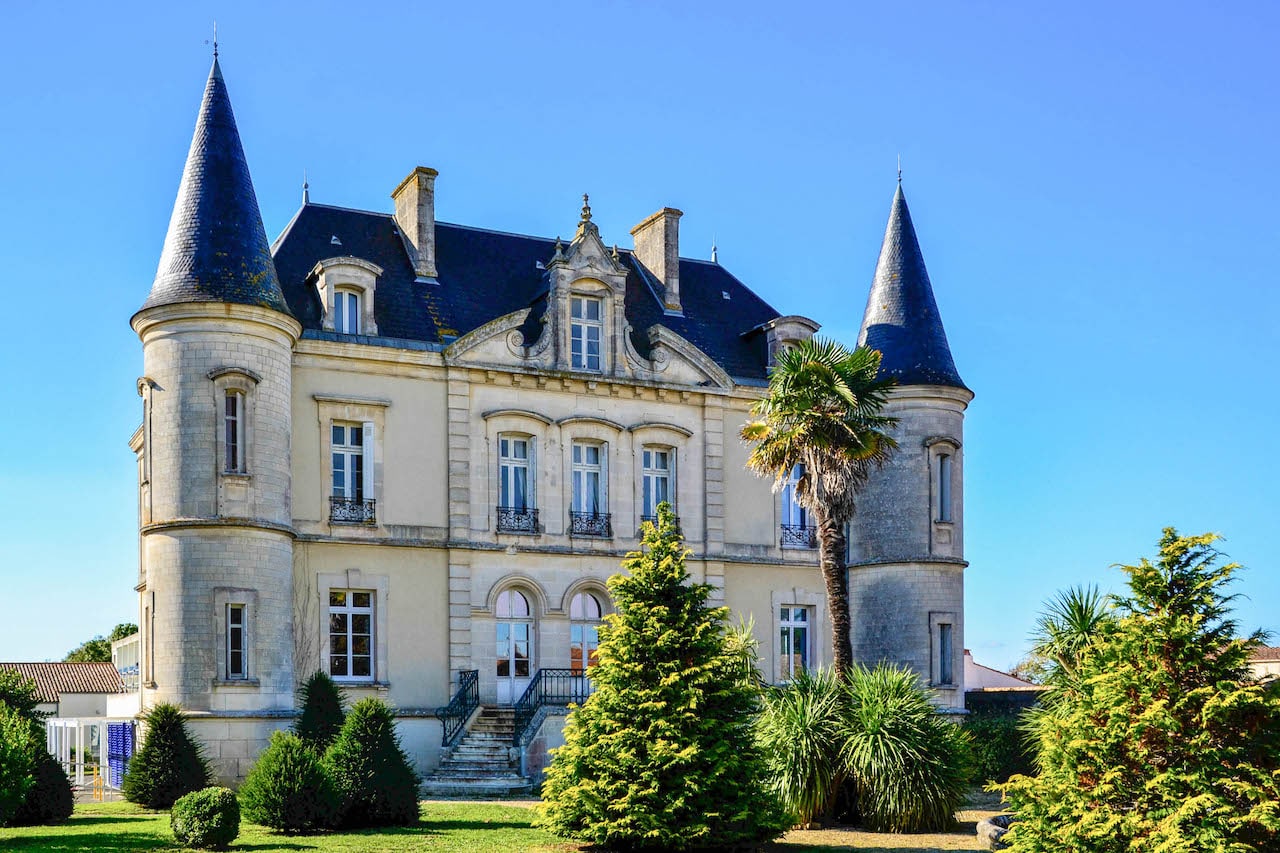
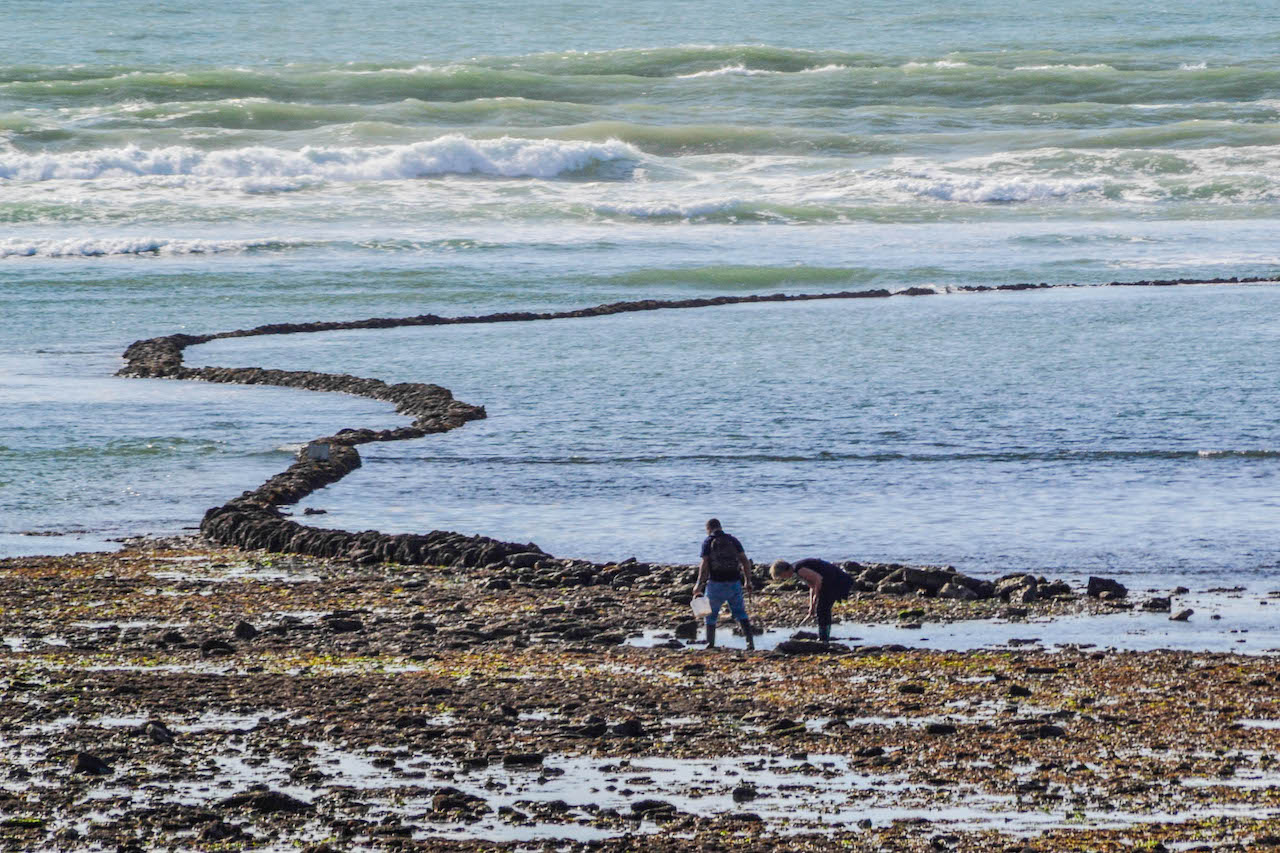
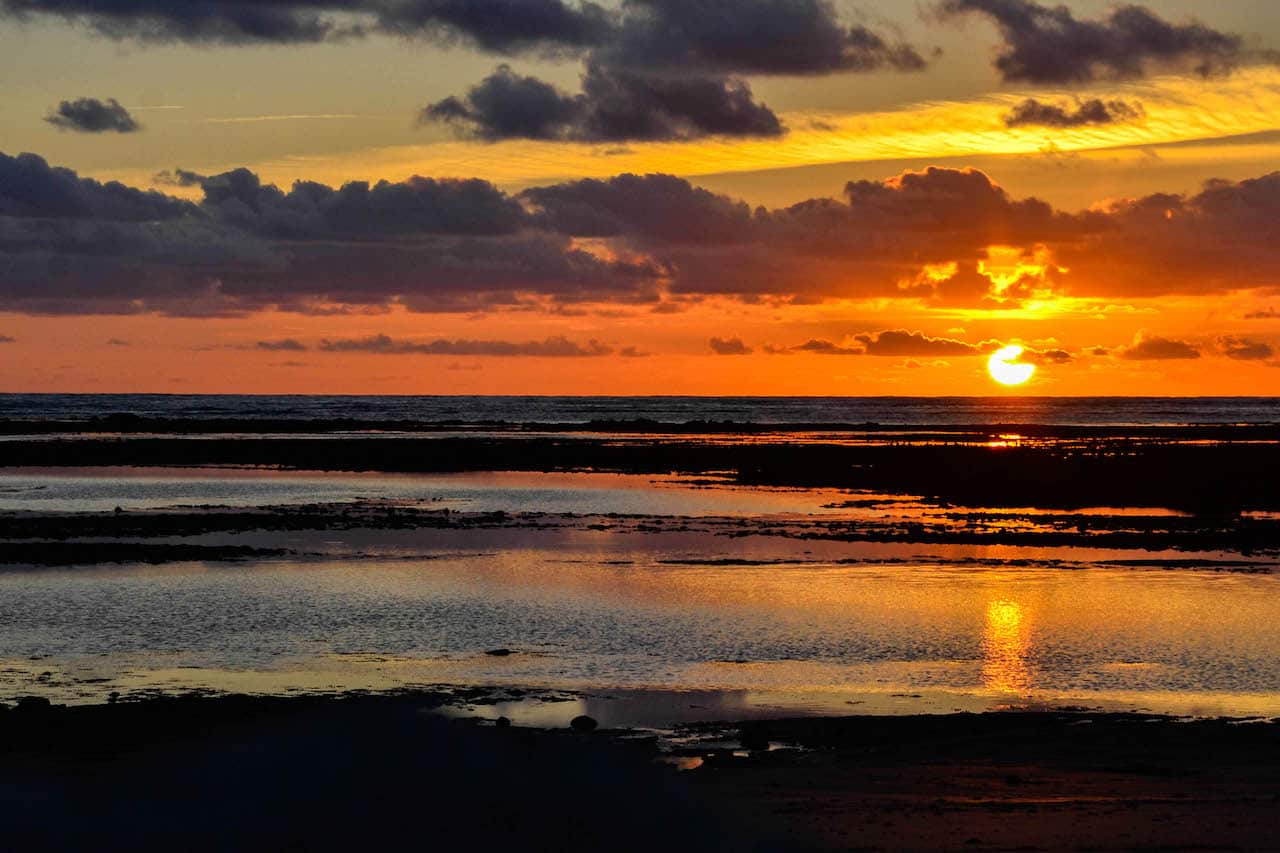
The beaches of the Ile d’Oléron
An der Ostküste ist das Meer ruhig. Dort befinden sich lange feinsandige Strände, die ideal für Ferien mit Kindern oder Hunden sind. In diesem Beitrag findest du mehr Infos zum Thema “Reisen und Camping mit Hund in Frankreich” An der Westküste rollen die Wellen des Atlantiks an. Dort ist es etwas wilder, dafür gibt es bei Ebbe feinen Sandstrand soweit das Auge reicht, hohe Dünen und Kiefernwälder. Hier ist auch das Reich der Surfer, denen du, wenn du nicht selbst auf ein Board steigst, bei ihrem waghalsigen Ritt über die Wellen zuschauen kannst.
The forests on the island
Walks along the marked paths in the shade of the forests around Saint Trojan, Les Saumonards, Domino or Les-Sables-Vigniers are an experience: the pleasant sea air mingles with the scent of maritime pines and holm oaks. Whether in the forests or in the island’s wetlands, which are now used for salt production and oyster farming, nature lovers will encounter over 250 different bird species and more than 140 types of flowers.
Unlimited sporting activities
Water sports are at the top of the list: sailing, surfing, canoeing or kayaking, stand-up paddling, swimming, diving and snorkeling. You will find local contacts for all activities on the Ile d’Oléron.
Hiking or cycling is the best way to explore the most remote corners of the island and get to know the country and its people. Marked hiking and cycling trails can be found all over the island.
Food culture par excellence
Marennes-Oléronne oysters are considered the best in the world. It is the only French oyster allowed to bear the red seal of quality. The mussels are also highly prized. The specialties are offered fresh in the restaurants, but also at the markets, which can be found almost daily in every town. Fish in all variations, lamb meat from the salt marshes and fruit and vegetables from regional agriculture are also highly recommended. All of this harmonizes with the wines of Oléron, which are available in white and rosé.
Info
Some oyster farmers organize the so-called L’Églades. This involves spreading mussels on stones, covering them with pine needles and setting them on fire. The mussels cooked over an open fire provide a unique taste experience.
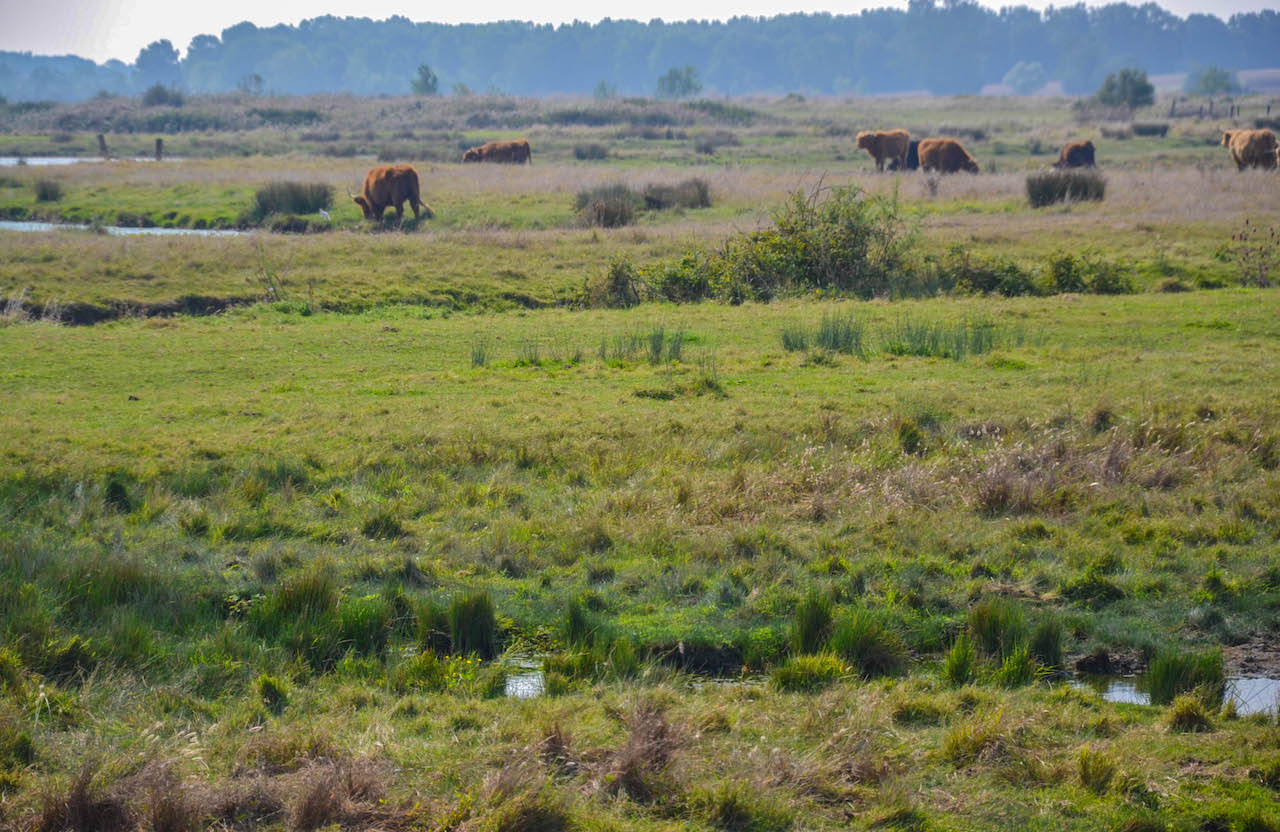
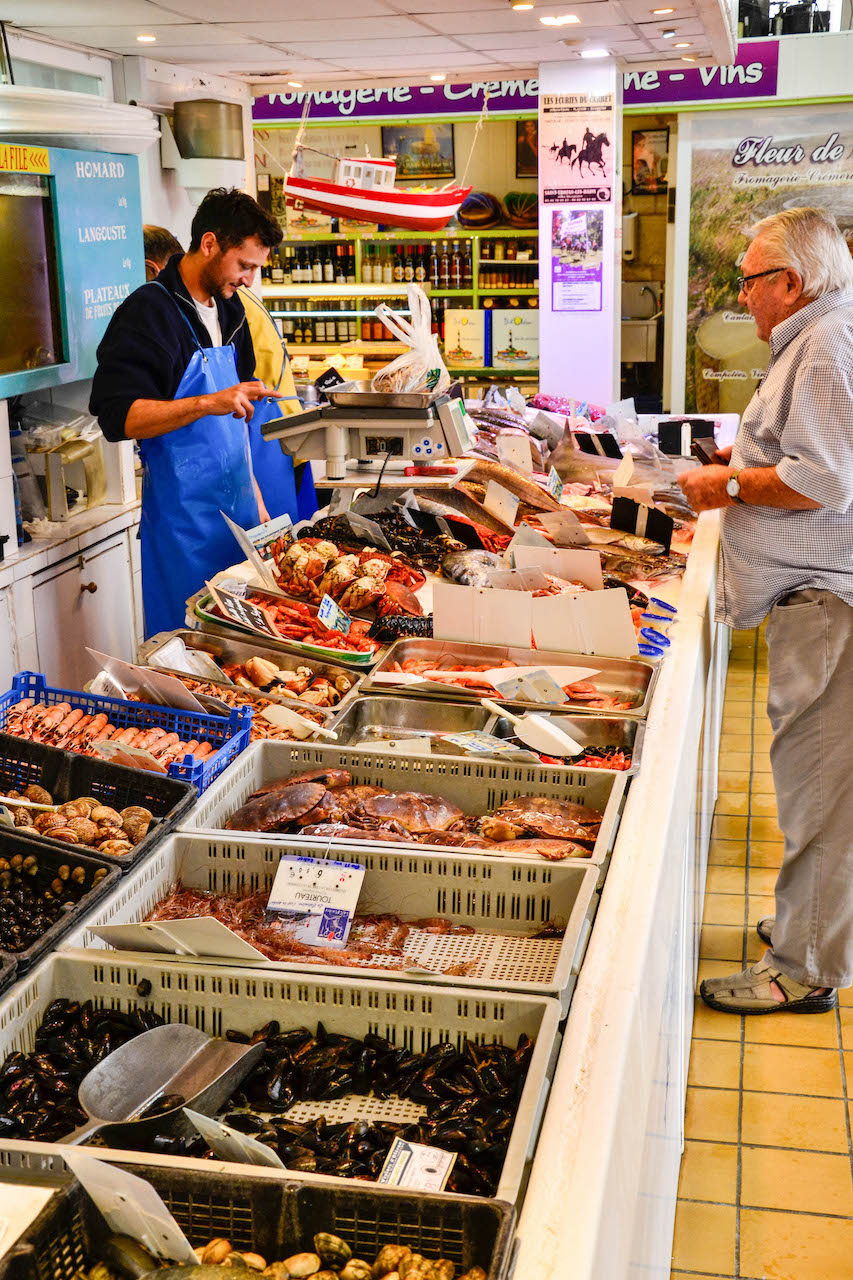
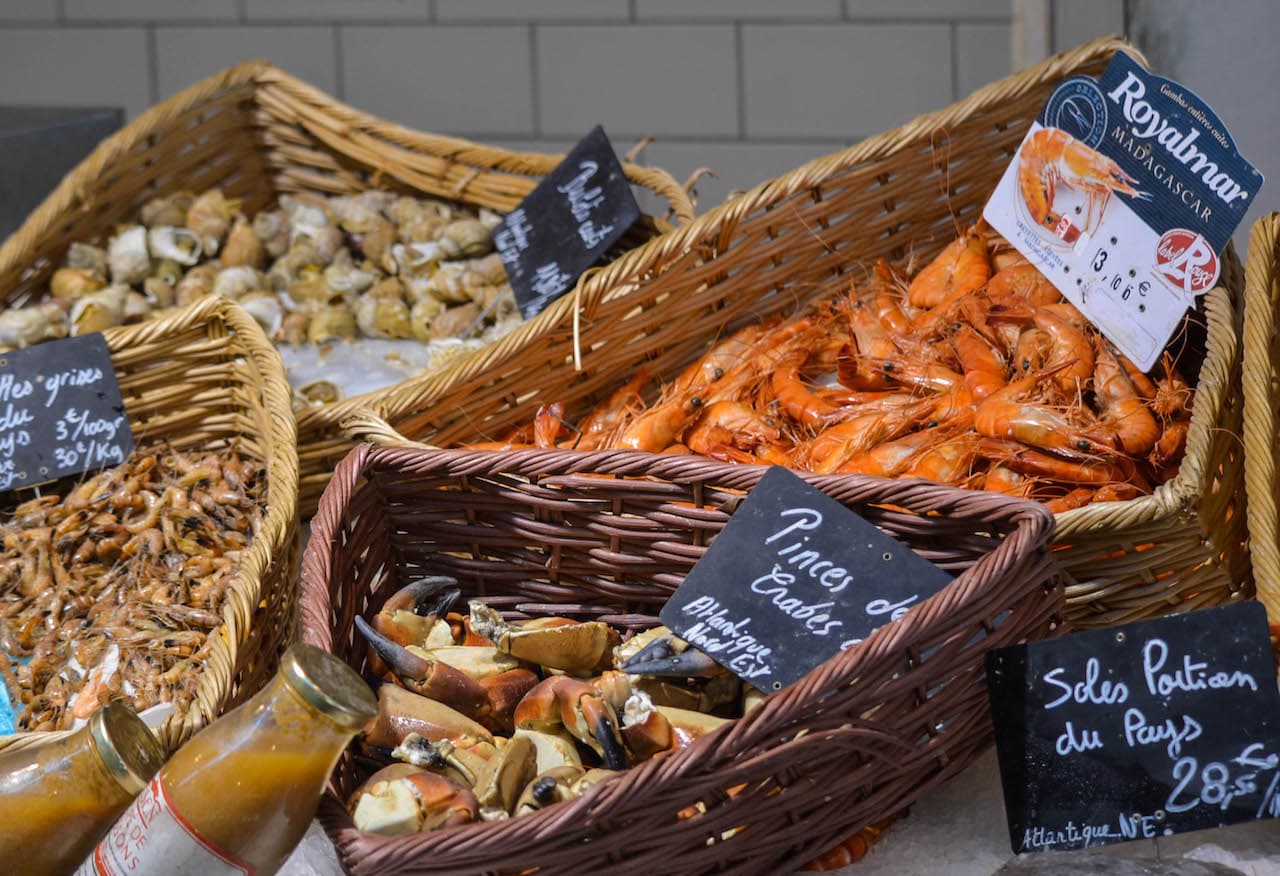
Here is a small selection of campsites on the French island of Ile d’Oléron, most of which are open from around March/April to September/October:
Ile d’Oléron campsites on the east coast
- Location: only 50 m from the beach
- Shady pitches with supply and disposal
- Numerous rental accommodations
- Address: 17480, Le Château-d’Oléron
- Location: 5-star campsite right by the sea
- Large pool area
- exclusive rental accommodation
- Address: 17480, Le Château-d’Oléron
- Location: between wetland and beach
- Shady pitches
- Exceptional rental accommodation
- Address: 17190, Saint-Georges-d’Oléron
Campingclub de France – La Gautrelle
- Location: directly by the sea
- Pitches for caravans, motorhomes and tents
- Rental accommodation, including mattress dormitories
- Address: 17190, Saint-Georges-d’Oléron
- Location: only 100 m to the beach
- Parceled parking spaces, separated by hedges
- Mobile homes as rental accommodation
- Address: 17650, Saint-Denis-d’Oléron
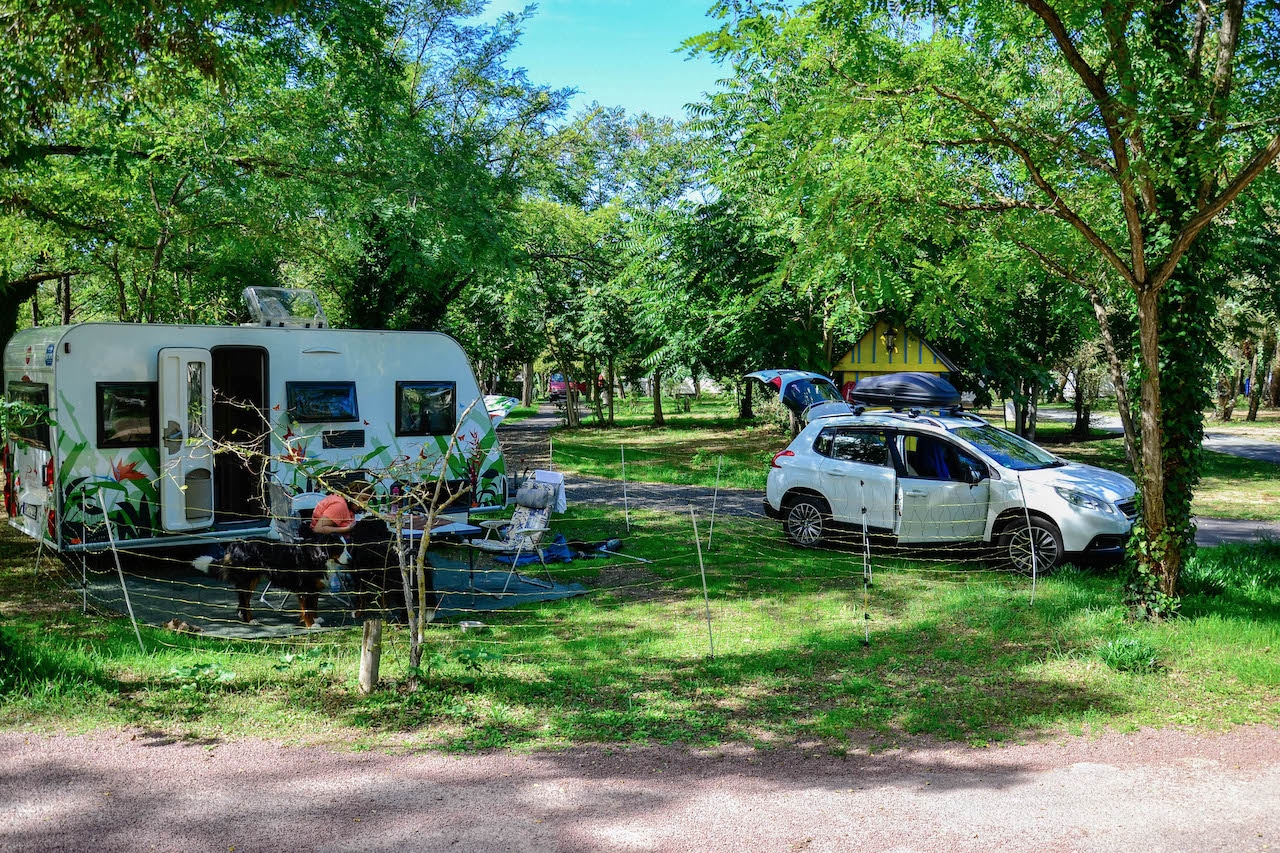
Ile d’Oléron campsites on the west coast
- Location: directly in the dunes
- Spacious parking spaces
- Mobile homes
- Pool area
- Address: 17650 Saint-Denis-d’Oléron
- Location: between dunes and forest
- Shady pitches
- Log cabins and mobile homes as rental accommodation
- Address: 17190 Saint-Georges-d’Oléron
- Located between dunes and forest, close to the beach
- among the “Top 100” of the most popular French campsites
- 5-star infrastructure
- Address: 17190 Saint-Georges-d’Oléron
- Location: north of the fishing port of La Cotinière
- Shady to semi-shady pitches
- park-like grounds
- Address: 17310 Saint-Pierre-d’Oléron
- Location: on the edge of salt marshes
- shady, spacious pitches
- Various rental accommodations
- Address: 17370 Le-Grand-Village-Plage
- Location: Between the village and the beach
- Shady spots in the pine forest
- different rental accommodations
- Address: 17370 Le-Grand-Village-Plage
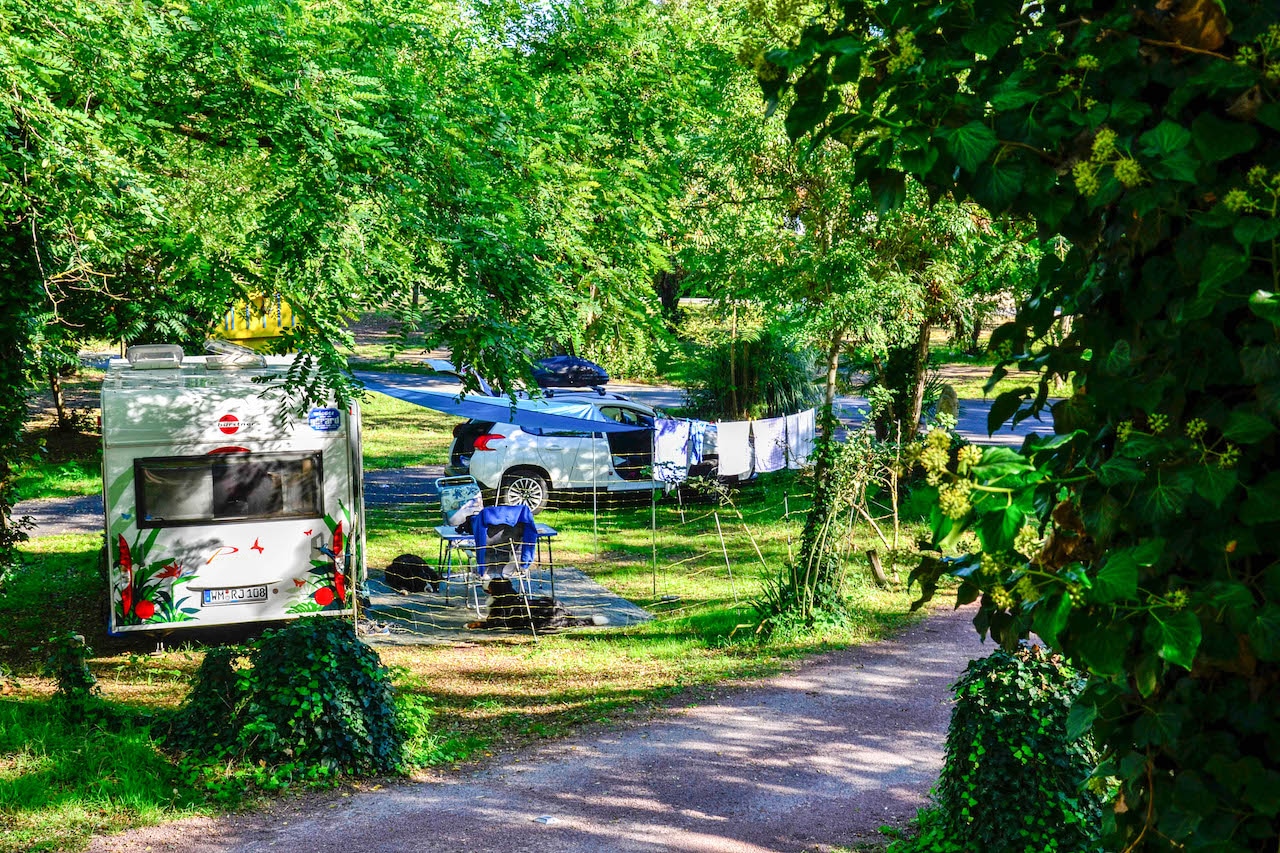
What else is there to do on or from the French islands?
The advantage of islands that are connected to the mainland by a bridge is that you can easily leave the island for excursions. The coast around Marennes has a lot to offer:
A discovery tour to Hiers-Brouage is therefore recommended. First, the journey takes you through beautiful marshland. Brouage itself is a former harbor town from the 11th century. The town flourished economically during the 16th century thanks to the lively salt trade. The fact that the town was completely rebuilt according to the original plans makes it interesting and worth seeing. Surrounded by an almost square defensive wall and streets running at right angles, today it is mainly artisans who ply their trade here.
The port city of La Rochelle is also worth a visit. The capital of the département has been a fishing and trading center with a long seafaring tradition since the 12th century. In addition to the old port, the Vieux Port, the old town with its medieval half-timbered houses and Renaissance buildings is also a much sought-after attraction.
And while you’re on the mainland, a visit to one of the most visited zoological gardens in France is also recommended: The Zoo de la Palmyre is home to more than 1,600 animals and 115 species on an attractively designed 18-hectare site.
- Oetker, Alexander (Author)
Conclusion on the French islands of Ile de Ré and Île d’Oléron
During the main tourist season in July and August (the French vacation season), the French islands are extremely busy. The weekends during the year can also be a little more crowded. But if you travel in the early or late season, you will experience empty beaches, you will find a parking space everywhere and you can also visit without getting caught in a crowd of people. You’ll also find motorhome pitches and campsites to suit every taste and budget. So enjoy the time, the sea, the country, the people and their food.
With this in mind: Bon Voyage and have fun.
Photos: © Hubert Hunscheidt
Letzte Aktualisierung der Preise am 2026-01-09 / Affiliate Links / Bilder von der Amazon Product Advertising API
